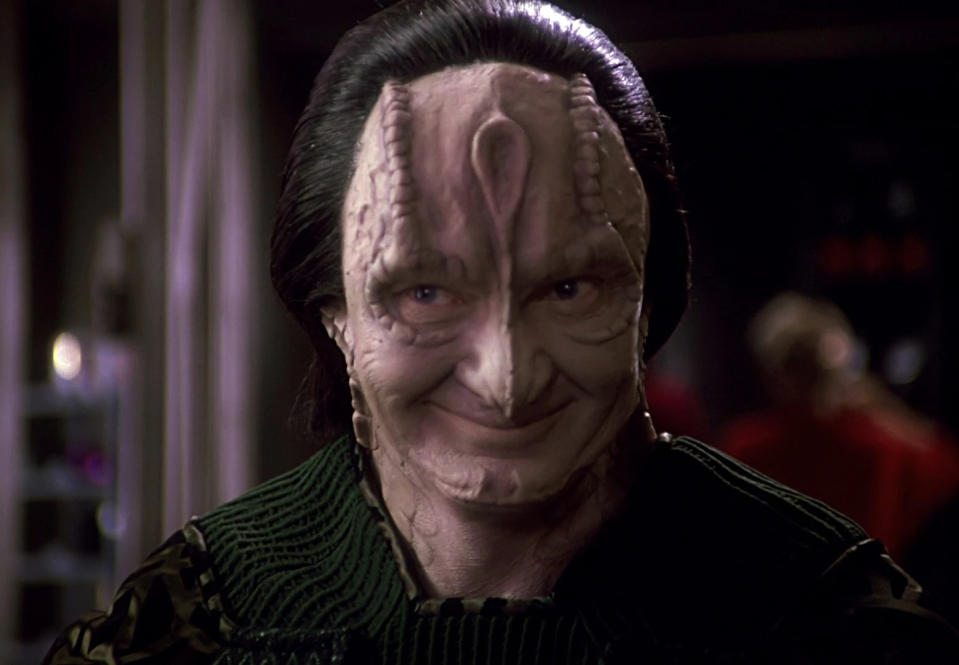
Paramount+’s ongoing “Star Trek: Discovery” may feature the most out LGBTQ+ characters ever seen in the “Star Trek” universe, but diehard Trekkies know that the groundwork was laid long before then.
Premiering in 2017 to critical and fan acclaim, “Star Trek: Discovery” featured out gay actors (and original “Rent” co-stars) Anthony Rapp and Wilson Cruz as chief engineer Paul Stamets and his husband Hugh Culber, respectively. Together, they made history as the first out gay couple on any “Star Trek” franchise, and that’s something series co-creator Bryan Fuller is very proud of.
More from IndieWire
“That was something that was very important from the outset is to have explicit representation of queerness,” Fuller told IndieWire during a recent interview. “So I’m glad that queer people are finally seeing themselves in ‘Star Trek’ stories in a way that they hadn’t before. But I think queer representation in ‘Star Trek’ really started with ‘Deep Space Nine’ more so than any of the other franchises or shows.”
A prolific TV writer, producer, and creator known for popular cult classics like “Pushing Daisies” and “Hannibal,” Fuller cut his teeth as a writer on “Deep Space Nine” and “Voyager” throughout the late ’90s. Though he parted ways with “Discovery” before the first episode aired, he sees his work on those earlier “Star Trek” series as laying the groundwork for its current openly queer iteration.
As a longtime Trekkie, he is aware of the limitations of the originals, especially when it came to women characters.
“We saw in ‘Next Generation’ and classic ‘Star Trek,’ women were often relegated to caretaking roles,” Fuller said. “That’s not to say that we didn’t have fantastic characters, because I loved Dr. Crusher and Counselor Troi. They’ve had amazing episodes, but Uhura never got an episode. She was always a supporting character. So it’s fascinating to see the evolution from classic ‘Star Trek’ to ‘Next Generation,’ then the quantum leap forward that ‘Deep Space Nine’ took in terms of representation and queerness.”
While Fuller has been out himself for his entire career, his characters were not always afforded the same freedom. Coming up more than two decades ago, he became adept at noticing and nurturing queerness in subtle ways.
“You have the stories with Dax and the taboos of her relationships loving another person from her past as a Trill, but for the modern audiences, we’re seeing queer oppression born out of this narrative,” he said. “Characters like Garak on ‘Deep Space Nine’ who, thanks to Andrew Robinson’s fantastic portrayal, explicitly represent a queer character for the first time that I personally think is the best. Garak is my favorite ‘Star Trek’ character of all time.”
Fuller is also proud of the way “Star Trek” influenced other great science fiction and fantasy shows of the time, many that became as iconic as “Star Trek” in their own right. He sees a direct line from “Deep Space Nine” to the groundbreaking relationship between Willow (Alyson Hannigan) and Tara (Amber Benson) on “Buffy The Vampire Slayer.”
“Then you look at the strength of Kira Nerys, and when you go to the Mirror Universe, you see the explicit queerness of that character in a way that sets up Willow’s line from ‘Buffy,’ where she meets her Doppelgänger and was like, ‘I think I’m a little queer.’ There’s something about those things that in ‘Star Trek’ started with ‘Deep Space Nine’ in a major way. Really it wasn’t until ‘Discovery’ made that queer representation more explicit that we got the next step.”
Best of IndieWire
Sign up for Indiewire’s Newsletter. For the latest news, follow us on Facebook, Twitter, and Instagram.








